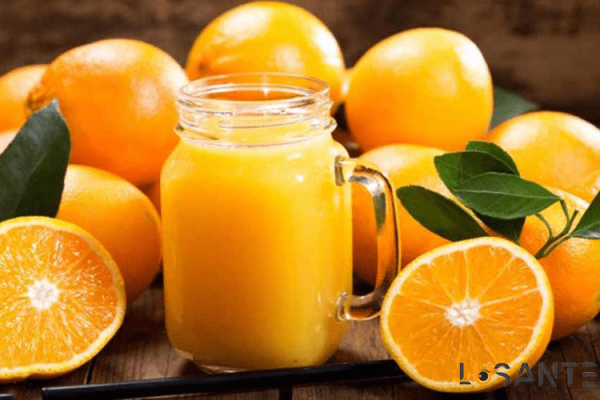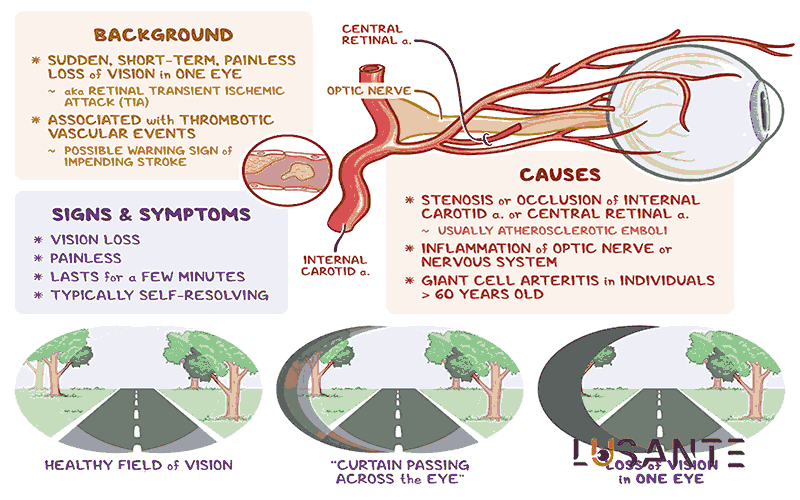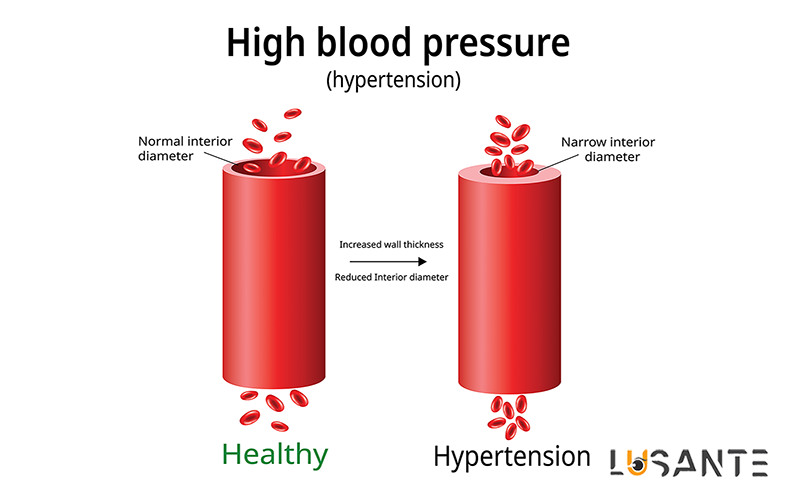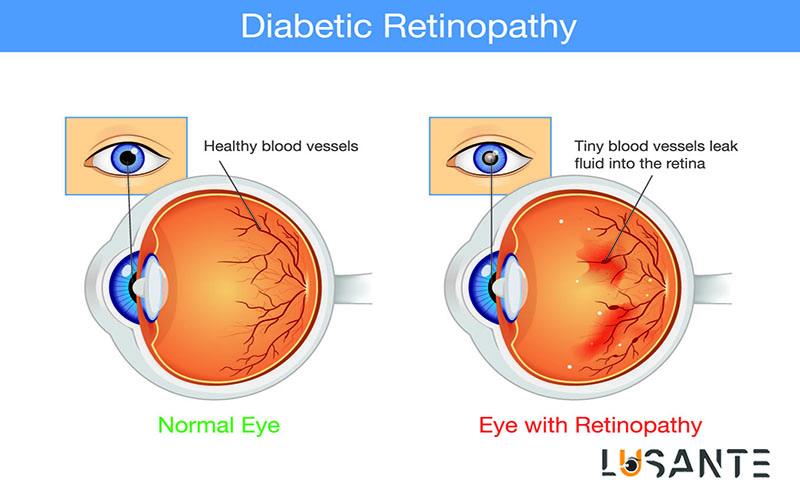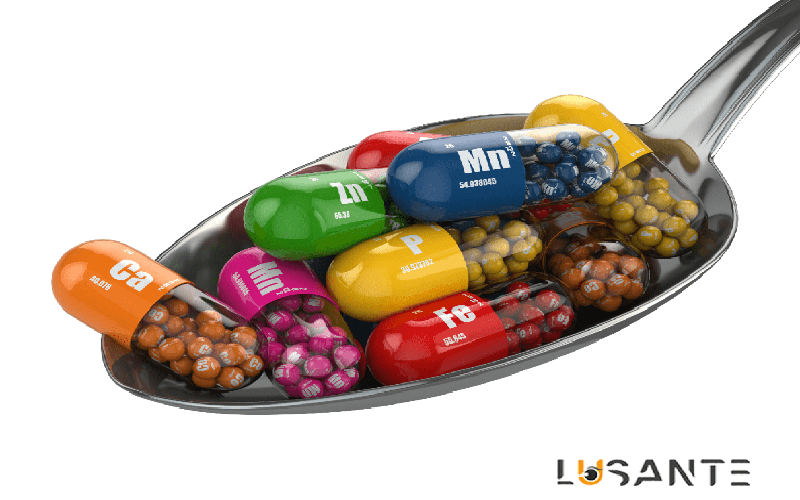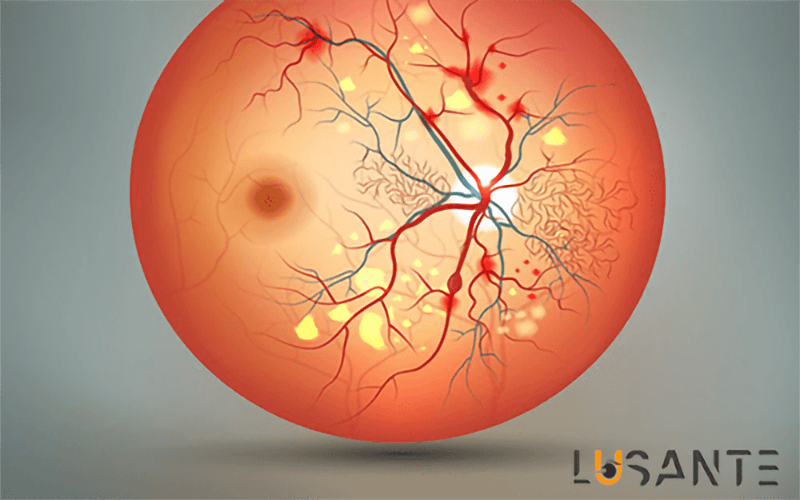Which Supplement Helps To Prevent Cataracts?
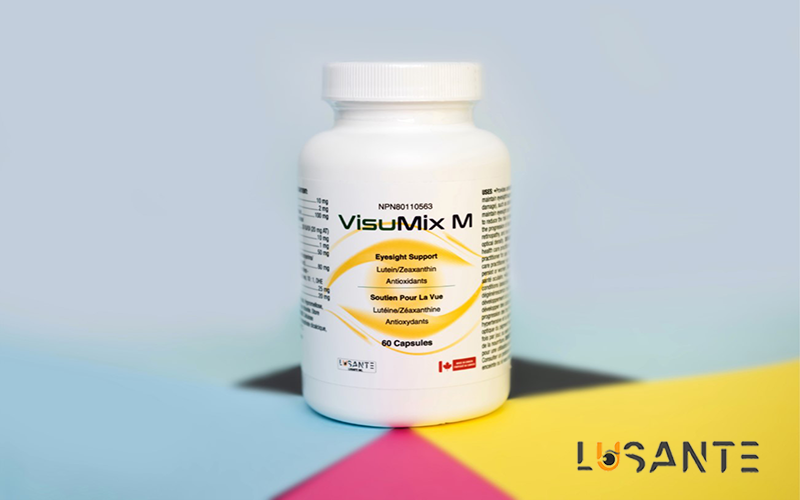
Eye vitamins for cataracts
We are all looking for the answer to the question of how to prevent cataracts. In the following, the best supplement helps to prevent cataracts are introduced.
Which supplement helps to prevent cataracts; bilberry and vitamin E
According to research, a combination of bilberry and vitamin E Prevent Cataracts in 96% of subjects. The dosage used in this research was 180 ml grams of bilberry, containing 25% of anthocyanosides and 100 ml grams of vitamin E twice a day for four months.
Several epidemiological researches have shown that there is a link between Prevent Cataracts and low levels of vitamin E and other antioxidants in the blood. For example, in a study conducted in the United States of America, 112 people were examined. The results showed that when the blood level of at least two of the three antioxidant substances, including vitamins E, C and carotenoids, is high, the risk of developing cataracts is reduced.
Two researches conducted in Finland also confirmed the same finding. In those researches, it was also found that the low level of vitamin E in the blood causes an increase in diseases such as cataracts or surface opacity of the eye lens.
Prevent Cataracts: What foods contain vitamin E?
Vitamin E is an essential vitamin found in most foods. Some foods, including oils, seeds, and nuts, are extremely rich sources of this vitamin. The sources that have the highest amount of vitamin E are (DV stands for daily dietary value):
- Wheat germ oil: 20 mg per tablespoon (135% DV);
- Sunflower seeds: 35 mg per 100 g (234% DV);
- Almonds: 26 mg per 100 g (171% DV);
- Hazelnut oil: 6.4 mg per tablespoon (43% DV);
- Sunflower oil: 5.6 mg per 1 tablespoon (37% DV);
- Almond oil: 5.3 mg per tablespoon (36% DV);
- Hazelnuts: 15 mg per 100 g (100% DV);
- Goose meat: 1.7 mg per 100 g (12% DV);
- Peanuts: 8.3 mg per 100 g (56% DV);
- Atlantic salmon: 1.1 mg per 100 g (8% DV);
- Avocado: 2.1 mg per 100 g (14% DV);
- Rainbow trout: 2.8 mg per 100 g (19% DV);
- Sweet red pepper (raw): 1.6 mg per 100 g (11% DV);
- Mango: 0.9 mg per 100 g (6% DV);
- Turnip greens (raw): 2.9 mg per 100 g (19% DV);
- Kiwi: 1.5 mg per 100 g (10% DV).
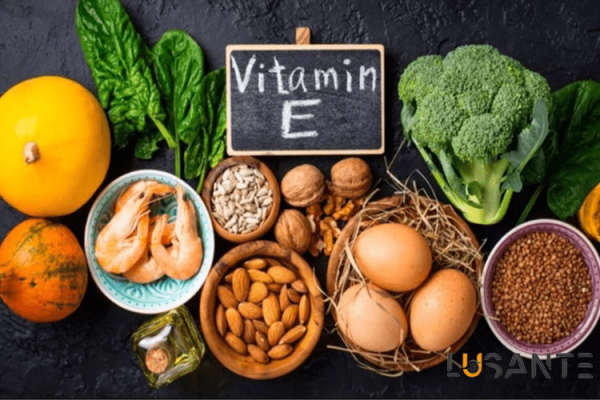
Prevent Cataracts: Fruits with vitamin E
Fruits are often not very rich sources of vitamin E which helps to Prevent Cataracts; But, there are different amounts of vitamin E in many fruits. Also, the more important point is that other vitamins such as vitamin C and group B vitamins are also found in fruits, which, along with vitamin E, can have very good antioxidant properties. Fruits with vitamin E that have the highest amount of this vitamin are:
- Tropical apples: per 100 grams: 2.1 mg (14% DV);
- Avocado: per 100 grams: 2.1 mg (14% DV);
- Mango: per 100 grams: 0.9 mg (6% DV);
- Kiwi: per 100 grams: 1.5 mg (10% DV);
- Blackberries: per 100 grams: 1.2 mg (8% DV);
- Black currants: per 100 grams: 1.0 mg (7% DV);
- Cranberries (dried): per 100 g: 2.1 mg (14% DV);
- Olives: per 100 grams: 3.8 mg (25% DV);
- Apricots: per 100 grams: 0.9 mg (6% DV);
- Raspberries: Per 100 grams: 0.9 mg (6% DV).
It is not possible to say exactly which fruit contains the most vitamin E; But, tropical apple, avocado, mango and kiwi are the richest fruits in terms of vitamin E content.
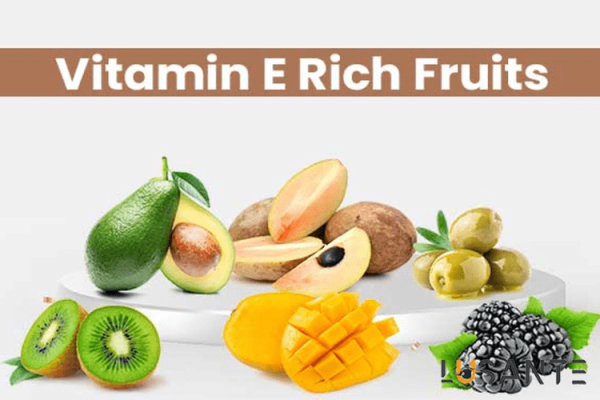
Which supplement helps to prevent cataracts; Taking vitamins A and C
Vitamins A and C are powerful antioxidants that help the eyes fight damage caused by free radicals and Prevent Cataracts. This is an important issue because free radical damage can Prevent Cataracts. To get the optimal level of these antioxidants in order to strengthen and maintain eye health, you can consider taking supplements containing these nutrients.
The effect of Vitamin A
Vitamin A is a fat-soluble vitamin that plays a vital role in maintaining vision, body growth, immune function, and reproductive health. By getting enough vitamin A from the diet, you can prevent the symptoms of its deficiency. These symptoms include: hair loss, skin problems, dry eyes, night blindness and increased susceptibility to infections.
Vitamin A deficiency is one of the main causes of blindness in developing countries. In contrast, most people in developed countries get enough vitamin A from their diet.
Required amount of vitamin A for different age groups:
900 micrograms for men, 700 micrograms for women, and 300 to 600 micrograms for children and adolescents.
The Recommended Dietary Allowance (RDA) provides enough vitamin A for the vast majority of people. This article lists some foods rich in vitamin A along with fruits and vegetables that contain pro-vitamin A.
There are two types of vitamin A:
- Vitamin A found in red meat, chicken, fish and dairy products is absorbed directly by the body when it enters the body.
- Vitamin A found in some fruits and vegetables such as spinach, when it enters the body, the body must first process them through a process to be absorbed.
What foods contain vitamin A?
- Beef liver – 713% daily value per serving
100 grams: 9,442 micrograms (1,049% daily value)
- Lamb’s liver – 236% daily value per serving
100 grams: 7.491 micrograms (832% daily value)
- Liver sausage – 166% daily value per serving
100 grams: 8384 micrograms (923% daily value)

- Fish liver oil – 150% daily value per use
100 grams: 30,000 micrograms (3,333% daily value)
- Salmon – 25% daily value per serving
100 grams: 149 micrograms (17% daily value)
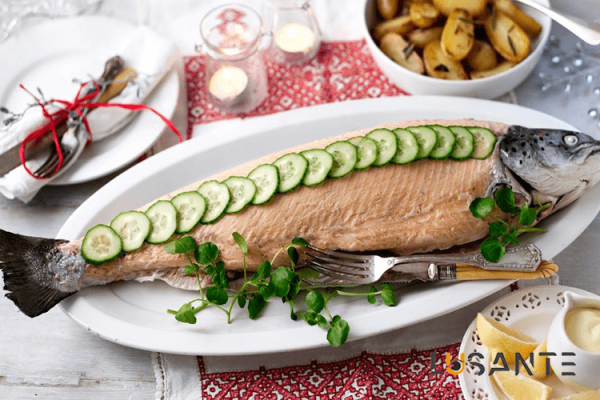
- Goose liver – 14% daily value per serving
100 grams: 1,001 micrograms (111% daily value)
- Butter – 11% daily value per serving
100 grams: 684 micrograms (76% daily value)
- Boiled eggs – 8% daily value per serving
100 grams: 149 micrograms (17% daily value)
- Caviar – 5% daily value per serving
100 grams: 271 micrograms (30% daily value)
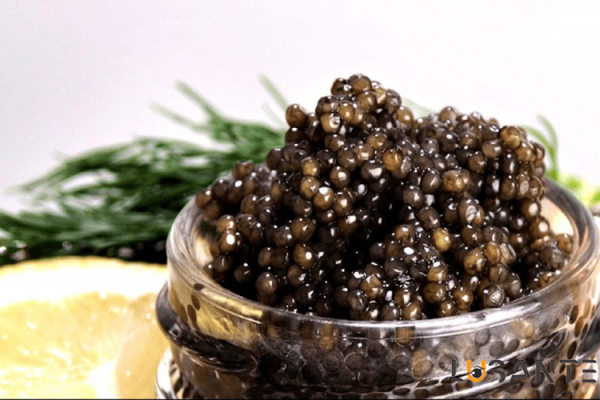
6 vegetables high in pro-vitamin A
Your body can make vitamin A from carotenoids found in plants. These carotenoids include beta-carotene and alpha-carotene, which are collectively known as pro-vitamin A. However, about 45% of humans have genetic mutations that significantly reduce the ability to convert provitamin A to vitamin A.
The following vegetables may provide significantly more vitamin A which ia affective to Prevent Cataracts than the recommended amount, depending on your genetics.
1- Sweet potatoes (cooked) – 204% daily value per serving
100 grams: 1043 micrograms (116% daily value)
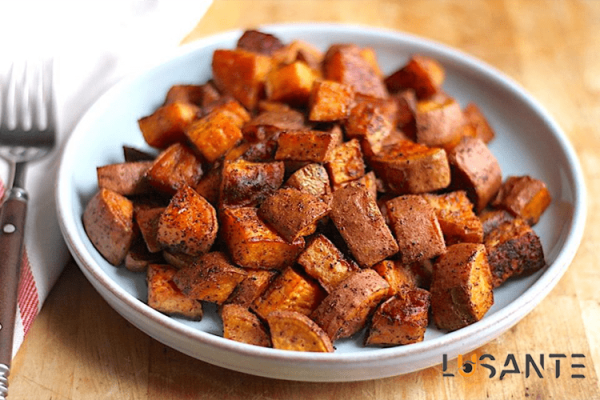
2- Kale (cooked) – 98% daily value per serving
100 grams: 681 micrograms (76% daily value)
3- Turnip leaves (cooked) – 61% daily value per serving
100 grams: 381 micrograms (42% daily value)
4- Carrots (cooked) – 44% daily value per serving
100 grams: 852 micrograms (95% daily value)
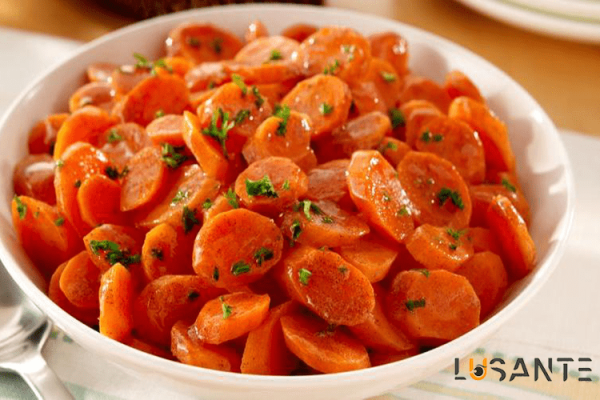
5- Sweet red pepper (raw) – 29% daily value per serving
100 grams: 157 micrograms (17% daily value)
6- Spinach (raw) – 16% daily value per serving
100 grams: 469 micrograms (52% daily value)
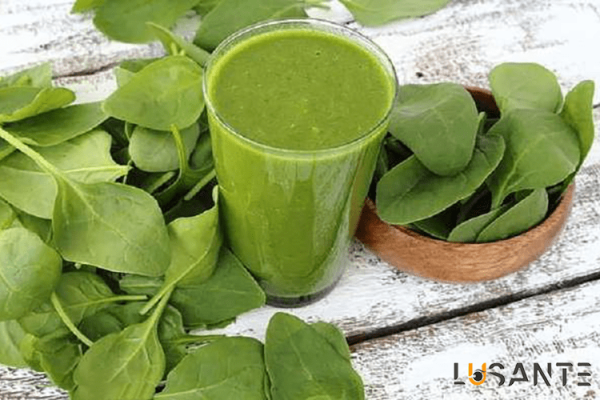
8 fruits high in pro-vitamin A
Provitamin A is generally more abundant in vegetables than in fruits. But a few types of fruits provide good amounts as shown below.
1- Mango – 20% daily value per serving
100 grams: 54 micrograms (6% daily value)

2- Calories – 19% of the daily value per serving
100 grams: 169 micrograms (19% daily value)
3- Pink or red grapefruit – 16% daily value per serving
100 grams: 58 micrograms (6% daily value)
4- Watermelon – 9% daily value per serving
100 grams: 28 micrograms (3% daily value)
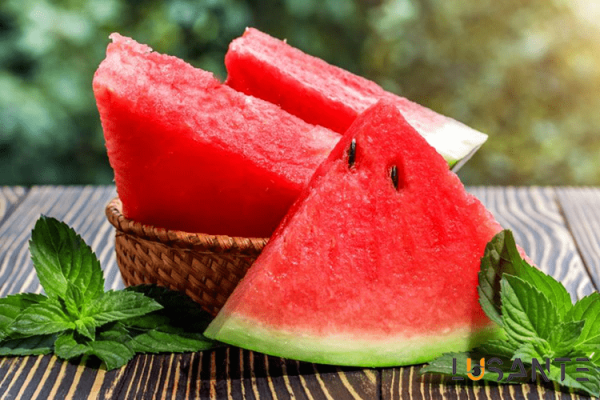
5- Apricot – 4% daily value per serving
100 grams: 96 micrograms (11% daily value)
6- Tangerine – 3% daily value per serving
100 grams: 34 micrograms (4% daily value)
7- Nectarine – 3% daily value per use
100 grams: 17 micrograms (2% daily value)
8- Rosehip fruit – 1% daily value per use
100 grams: 64 micrograms (7% daily value)
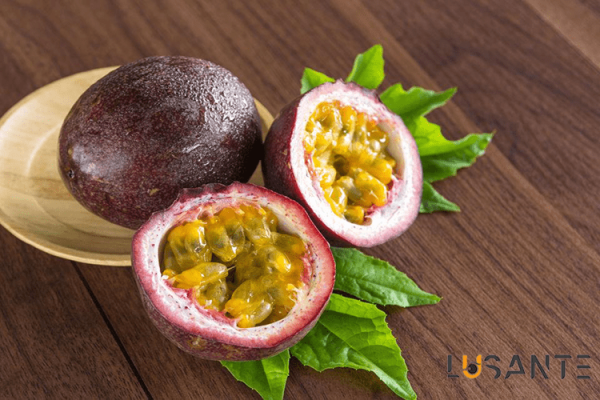
How could you meet your daily vitamin A needs to Prevent Cataracts?
You can easily get your vitamin A needs on a regular basis by consuming the listed foods. Many other foods also contain vitamin A, including cereals, margarine, and dairy products.
Since vitamin A is fat soluble, it is more absorbed into the bloodstream when eaten with fat. Many animal foods that are rich in vitamin A are also high in fat, but most plant sources of provitamin A are not.
You can improve the absorption of vitamin A from plant sources by adding some oil to your salad. However, as mentioned above, some people have a genetic mutation that makes the conversion of provitamin A to vitamin A much less.
For this reason, vegetarians should also take supplements or plenty of the fruits and vegetables mentioned above.
Related Product: VisuMix M
Fortunately, foods rich in vitamin A are usually readily available and most provide a healthy diet.
The effect of Vitamin C
Vitamin C is also effective to Prevent Cataracts.Vitamin C a water-soluble vitamin that the body cannot produce or store. For this reason, we should be familiar with the sources of vitamin C and include them in our diet. The human body needs at least 90 mg of vitamin C daily.
Due to its antioxidant property, great effect on skin health, helping to improve the condition of the body’s immune system, and other important properties, vitamin C is absolutely necessary for the continuation and maintenance of human health.
In this article, we are going to introduce you to some of the richest sources of vitamin C. If you want to know what vitamin C is in, be sure to stay with us until the end.
How to get the daily requirements of vitamin C?
The best and most natural way to supply the body with vitamin C is to consume foods rich in vitamin C. In the following, we have introduced some great foods that are rich in vitamin C and may help to prevent cataracts.
- Rose fruit
Rose fruit is a small, sweet and slightly spicy fruit obtained from the rose plant. This fruit is rich in vitamin C. About six rosehips provide 119 milligrams of vitamin C, or 132% of the recommended daily intake.
Vitamin C is necessary for collagen formation, because with increasing age, it also causes the integrity and smoothness of the skin. Studies have shown that vitamin C reduces sun damage to the skin, reduces wrinkles, dry skin, and changes color and improves its overall appearance. Vitamin C also helps heal wounds and inflammatory skin diseases such as eczema.
Conclusion:
Rose fruit has 426 mg of vitamin C per 100 grams. About six seeds of this fruit provide 132% of the daily requirement and give your skin a healthier look.

- Chili peppers
One green chili contains 109 mg of vitamin C or 121% of the daily requirement. Also, one red chili pepper provides 65 mg or 72% of the daily requirement.
In addition, chili peppers are rich in capsaicin, the compound responsible for their hot taste. Capsaicin can also reduce pain and inflammation. There is also evidence that roughly one tablespoon (10 grams) of red chili powder can help increase fat burning.
Conclusion:
Green chili peppers contain 242 mg of vitamin C per 100 grams. Thus, a green chili provides 121 percent of the daily requirement, while a red chili provides 72 percent.
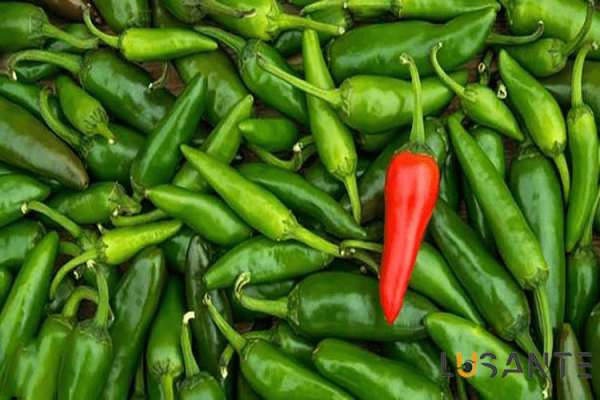
- Yellow bell pepper
Vitamin C in bell peppers or sweet peppers increases as they mature. Just one-half cup (75 grams) of yellow pepper provides 137 mg of vitamin C, or 152% of the recommended daily intake, which is double the amount found in green pepper.
Getting enough vitamin C is important for your eye health and can help protect your eyes from developing cataracts.
A study of more than 300 women found that those who consumed the most vitamin C had a 33 percent lower risk of developing cataracts than those with the lowest intake.
Conclusion:
With 183 mg per 100 grams, yellow peppers contain the highest concentration of vitamin C among all sweet peppers. Half a cup of sweet yellow pepper provides you with 152% of the recommended daily intake.
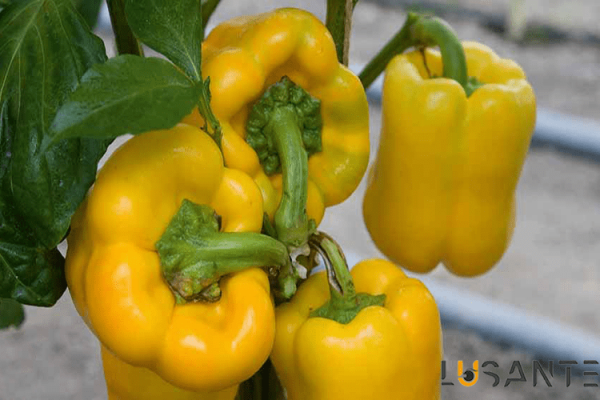
- Thyme
Each gram of fresh thyme has three times more vitamin C than an orange, and this plant has one of the highest concentrations of vitamin C among all medicinal plants. One ounce (28 grams) of fresh thyme provides 45 milligrams of vitamin C, which is 50% of the recommended daily intake.
Even just sprinkling 1-2 tablespoons (3-4 grams) of fresh thyme over your meal adds 3.5 to 7 milligrams of vitamin C to your diet, which can boost your immune system and help fight infections.
While thyme is a popular remedy for sore throats and respiratory conditions, it is also high in vitamin C, which helps improve immune health, build antibodies, kill viruses and bacteria, and remove infected cells.
Conclusion:
With 160 mg per 100 grams, thyme contains more vitamin C than most herbs. One ounce of fresh thyme provides 50% of the daily requirement for vitamin C. Thyme and other foods rich in vitamin C boost your immune system.
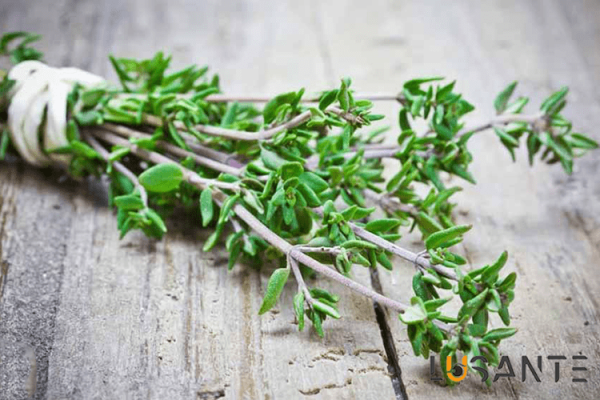
- Fresh parsley
Two tablespoons (8 grams) of fresh parsley contain 10 milligrams of vitamin C, which provides 11% of the recommended daily intake. Among other leafy vegetables, parsley is a significant source of non-hemoglobin iron. Vitamin C increases the absorption of non-heme iron. This helps prevent and treat anemia and iron deficiency.
A two-month study of people on a plant-based diet found that they got 500 milligrams of vitamin C by eating two meals a day. At the end of the study, their iron levels had increased by 17%, hemoglobin by 8% and ferritin, the stored form of iron, by 12%.
Conclusion:
Parsley contains 133 mg of vitamin C per 100 grams. Sprinkling two tablespoons of fresh parsley into your meal provides 11% of the daily value for vitamin C, which helps increase iron absorption.

- Spinach
One cup of raw chopped spinach provides 195 mg of vitamin C, or 217% of the recommended daily intake. Although the heat from cooking reduces the vitamin C in foods, one cup of cooked spinach still provides 117 milligrams of vitamin C, or 130% of the recommended daily intake. Like many dark leafy vegetables, spinach also contains vitamin A, potassium, calcium, manganese, fiber and folate.
Conclusion:
Spinach contains 130 mg of vitamin C per 100 grams. One cup of this leafy green vegetable provides 217% of the daily requirement of vitamin C in raw form and 130% of the daily requirement of vitamin C in cooked form.
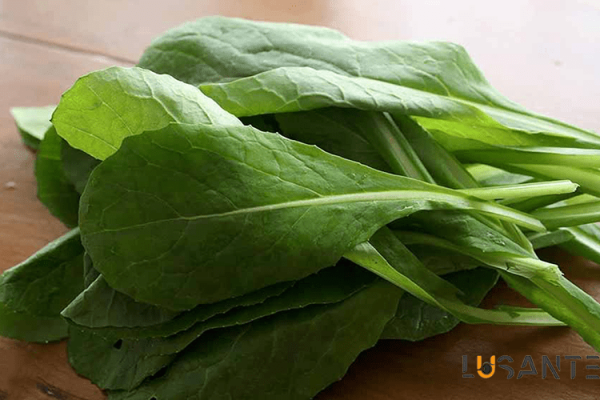
- Kale
Kale is a cruciferous plant. One cup of chopped raw kale provides 80 mg of vitamin C or 89% of the recommended value. This vegetable also provides large amounts of vitamin K and carotenoids lutein and zeaxanthin.
One cup of cooked cabbage provides 53 mg or 59% of the daily requirement for vitamin C. While cooking the vegetable reduces its vitamin C content, one study found that boiling, frying, or steaming leafy greens helps release more of their antioxidants. These powerful antioxidants can help reduce chronic inflammatory diseases.
Conclusion:
Green chili peppers contain 242 mg of vitamin C per 100 grams. Thus, a green chili provides 121 percent of the daily requirement, while a red chili provides 72 percent.

- Kiwi
A medium kiwi contains 71 mg of vitamin C or 79% of the recommended daily intake. Studies have shown that kiwi is rich in vitamin C and can help reduce oxidative stress, lower cholesterol, and improve immunity.
A study of 30 healthy people aged 20-51 found that eating 2-3 kiwis per day for 28 days reduced blood platelet stickiness by 18% and lowered triglycerides by 15%. This property can reduce the risk of blood clots and stroke.
Another study on 14 men with vitamin C deficiency found that eating two kiwis daily for four weeks increase white blood cell activity by 20%.In this study, blood vitamin C levels increased by 304% of normal after just one week.
Conclusion:
Kiwi contains 93 mg of vitamin C per 100 grams. An average kiwi provides 79% of the daily requirement for vitamin C, which boosts blood circulation and the immune system as a result.
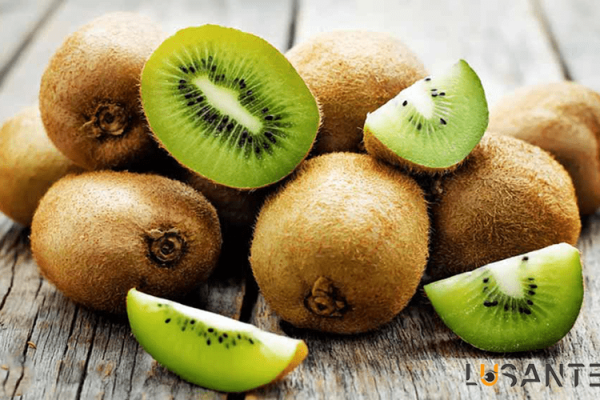
Broccoli is a cruciferous vegetable. One-half cup of cooked broccoli provides 51 milligrams of vitamin C, or 57% of the recommended daily intake.
Countless studies have shown a possible direct link between eating lots of vitamin C-rich vegetables and reducing oxidative stress, improving immunity, and reducing the risk of cancer and heart disease.
In a randomized study, 27 young men who were heavy smokers ate 250 grams of steamed broccoli containing 146 milligrams of vitamin C for ten days. After ten days, levels of C-reactive protein, a marker of inflammation, had dropped by 48%.
Conclusion:
Broccoli contains 89 mg of vitamin C per 100 grams. Half a cup of steamed broccoli provides 57% of the daily requirement for vitamin C and could reduce the risk of inflammatory diseases.
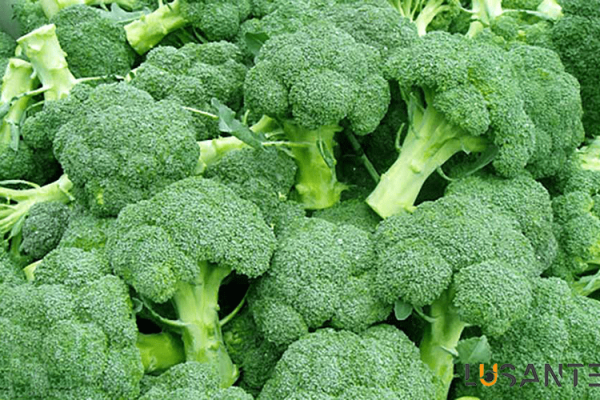
- Brussels sprouts
One and a half cups of cooked Brussels sprouts provides 49 milligrams, or 54% of the recommended daily intake, for vitamin C. Like most cruciferous vegetables, Brussels sprouts also contain fiber, vitamin K, folate, vitamin A, manganese, and potassium.
Both vitamins C and K are important for your bone health. In particular, vitamin C helps form collagen, which is the fibrous part of your bones.
A large review article in 2018 found that high dietary vitamin C intake was associated with a 26% lower risk of hip fracture and a 33% lower risk of osteoporosis.
Conclusion:
Brussels sprouts contain 85 mg of vitamin C per 100 grams. One and a half cups of steamed brussels sprouts provide 54% of the daily value for vitamin C, which can improve your bone strength and function.
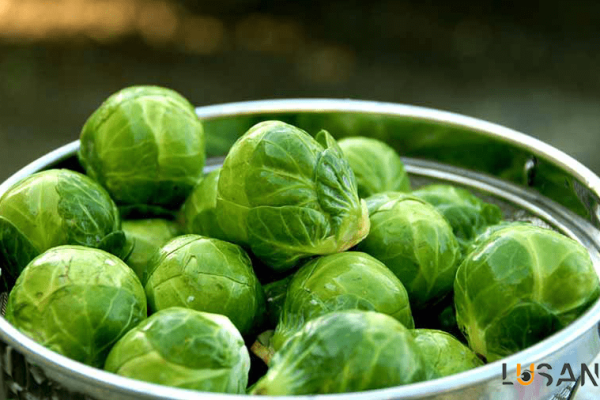
- Lemon
One whole raw lemon, with the peel, provides 83 mg of vitamin C, or 92% of the daily requirement. Vitamin C in lemon juice also acts as an antioxidant. During the 1700s, lemons were given to sailors to prevent scurvy.
When fruits and vegetables are cut, the polyphenol oxidase enzyme is exposed to oxygen. This causes oxidation and turns the food brown. Using lemon juice on surfaces exposed to light acts as a barrier and prevents the browning process.
Conclusion:
Lemons contain 77 mg of vitamin C per 100 grams, a medium lemon provides 92% of the daily requirement for vitamin C. Vitamin C has strong antioxidant properties and can keep your cut fruits and vegetables from browning and decaying.
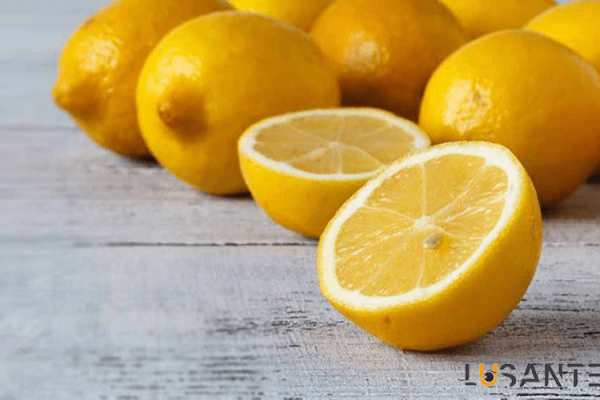
- Papaya
One cup (145 grams) of papaya provides 87 mg of vitamin C or 97% of the recommended daily intake. Vitamin C also helps boost memory and has strong anti-inflammatory effects on your brain.
In one study, 20 people with mild Alzheimer’s were given concentrated papaya extract for six months. The results shown included a reduction in inflammation and a 40% reduction in oxidative stress.
Conclusion:
Papaya contains 62 mg of vitamin C per 100 grams. One cup of papaya provides 87 milligrams of vitamin C, which can help support brain health and memory.
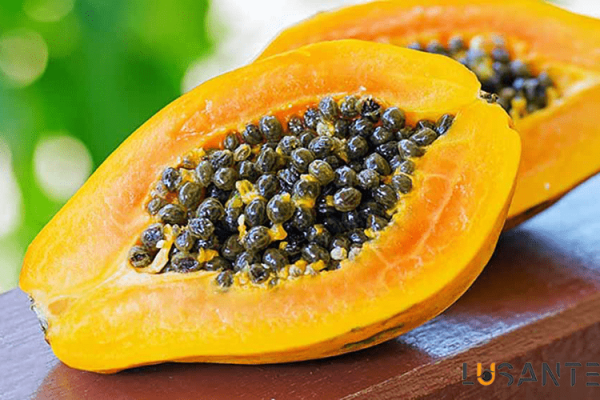
- Strawberry
One cup (152 grams) of sliced strawberries provides 89 milligrams of vitamin C or 99% of the recommended daily intake. Strawberries contain a diverse and powerful combination of vitamin C, manganese, flavonoids, folate, and other beneficial antioxidants.
Studies have shown that because of their high antioxidant content, strawberries can help prevent cancer, cardiovascular disease, dementia, and diabetes. A study of 27 people with metabolic syndrome found that eating frozen strawberries daily—the equivalent of 3 fresh cups—reduced the risk of heart disease.
After eight weeks, their levels of “bad” LDL cholesterol had dropped by 11%, while their levels of the blood vessel inflammation marker VCAM had dropped by 18%.
Conclusion:
Strawberries contain 59 mg of vitamin C per 100 grams. One cup of sliced strawberries provides 89 milligrams of vitamin C. This nutritious fruit can help your heart and brain health.
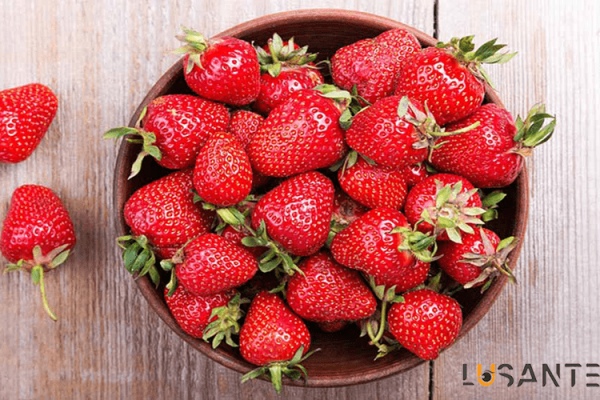
- Orange
A medium-sized orange provides 70 milligrams of vitamin C, which is 78 percent of the daily requirement. Wide consumption of oranges constitutes a significant part of vitamin C in the diet.
Other citrus fruits can also help you meet your vitamin C needs including:
- Half a grapefruit contains 44 mg or 73% of the daily requirement;
- One tangerine has 24 mg or 39% of the daily requirement;
- One mango fruit contains 57.34 mg of vitamin C or 96% of the required daily intake;
- One cup of pineapple contains 78.87 mg of vitamin C or 131% of the required daily intake;
- The juice of one lemon is 13 mg or 22% of the daily requirement.
Conclusion:
Oranges contain 53 mg of vitamin C per 100 grams. A medium orange provides 70 mg of vitamin C. Other citrus fruits such as grapefruit, tangerines, and limes are also good sources of this vitamin.
